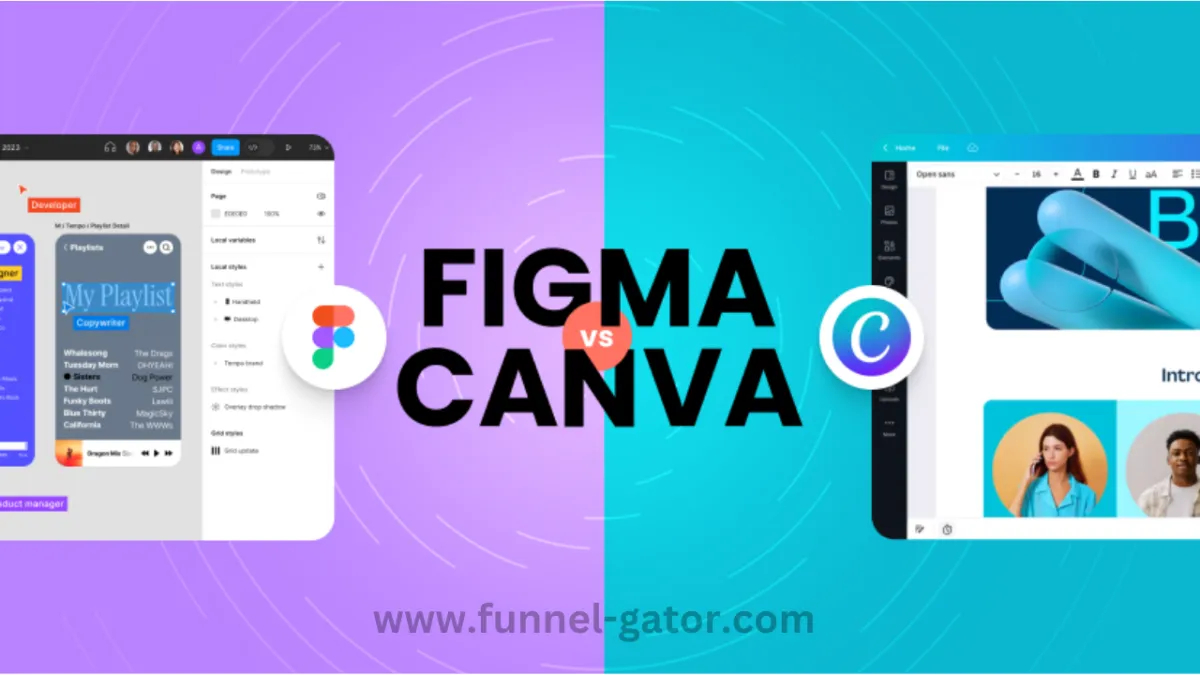
Figma vs Canva: Which Design Tool is Right for You in 2025?
If you're torn between Figma and Canva, you're not alone. Thousands of designers, marketers, entrepreneurs, and students find themselves stuck trying to figure out which tool best fits their needs.
In this guide, we’ll walk you through the core differences between Figma and Canva, using real-world examples, simple language, and practical steps to help you choose the right one with confidence.
🧩 What Are Figma and Canva?
Before we dive into comparisons, let’s quickly cover what each tool is:
Figma is a collaborative interface design tool used by UX/UI designers, developers, and product teams. Think of it as a digital whiteboard and a design powerhouse in one.
Canva is a user-friendly graphic design platform perfect for creating social media posts, presentations, flyers, and more — no design experience required.
💡 A Personal Story: Choosing Between Figma and Canva
A few years ago, I was working on a startup with no design team. We needed branding assets, app mockups, and a pitch deck — fast. I opened Figma and was immediately impressed by its flexibility.
But then my marketing lead jumped into Canva and whipped up a gorgeous social media campaign in under 30 minutes. That’s when I realized: these tools shine in very different ways.
⚔️ Figma vs Canva: Side-by-Side Comparison

🧠 When to Use Figma
Choose Figma when:
You're designing a website, app, or digital product.
You need to collaborate with developers or other designers.
You're working on wireframes, prototypes, or design systems.
You care about pixel-perfect precision.
You want your designs to be responsive and dynamic.
Figma is like a design sandbox — open, flexible, and endlessly customizable.
If you're curious, this beginner guide to Figma can be a great starting point.
🎨 When to Use Canva
Go for Canva if:
You need to create beautiful designs quickly and easily.
You’re focusing on social media content, printables, or presentations.
You’re not a designer and don’t want to mess with complex tools.
You want to work with a huge library of templates and elements.
You're part of a small team that doesn’t need high-level design systems.
Canva is perfect for teachers, marketers, virtual assistants, and even students making school projects.
Start exploring with their Canva Pro trial if you want to unlock premium features.
🛠️ Step-by-Step: How to Decide Which One You Need
Here’s a simple decision guide to help you out.
Step 1: Define Your Goal
Ask yourself:
Do I need marketing visuals like Instagram stories or flyers? → Go with Canva
Do I need to design an app interface or website prototype? → Go with Figma
Step 2: Assess Your Skills
No design background? Canva is your best friend.
Have some design experience or want to learn UI/UX? Try Figma.
Step 3: Consider Your Team
Working alone? Canva is faster.
Working with developers or a design team? Figma is better for collaboration.
🚀 Pro Tips for Both Tools
For Figma:
Use Figma plugins like Unsplash or Iconify to boost your workflow.
Create design systems with shared styles and components.
Learn shortcuts early — they’ll save you hours.
For Canva:
Explore the Magic Resize tool — it's a lifesaver for repurposing content.
Use Brand Kits in Pro to stay on-brand across all designs.
Collaborate with your team by creating shared folders and templates.
🌍 Use Cases in Real Life
Figma is what Airbnb, Uber, and Google use to design user interfaces. If you’re serious about a product career, Figma is a must-learn.
Canva, on the other hand, is used by small businesses, influencers, coaches, and nonprofits to create stunning visuals without hiring a designer.
🔄 Can You Use Both Together?
Absolutely. Many professionals use Figma for product design and Canva for marketing. Here’s an example:
A UI designer creates an app mockup in Figma.
The marketing team exports the assets and uses them in Canva to build promo graphics.
So don’t feel like you have to choose just one — they complement each other beautifully.
✅ Final Verdict: Figma or Canva?
If you want creative freedom, precision, and team collaboration — go for Figma.
If you want simplicity, speed, and social media-friendly designs — go for Canva.
Both tools are incredibly powerful in their own ways. The key is matching the tool to the task.
💬 What Users Are Saying
“Figma changed the way we design products. Real-time feedback, components, and prototyping — all in one.”
— Product Designer at a SaaS Startup
“Canva lets me run my entire social media strategy without a designer. It’s fast, beautiful, and easy.”
— Small Business Owner
🛍️ Ready to Start?
Try Figma for free and dive into design systems and app mockups.
Or unlock the full potential of Canva Pro and boost your content creation instantly.
Remember: you don’t have to be a designer to make great designs. You just need the right tool.


